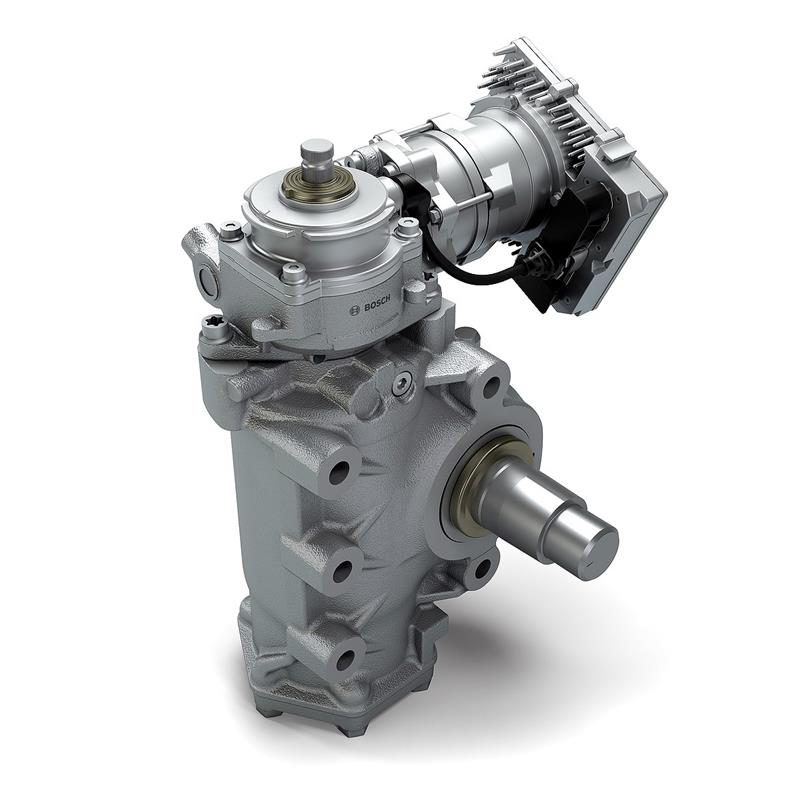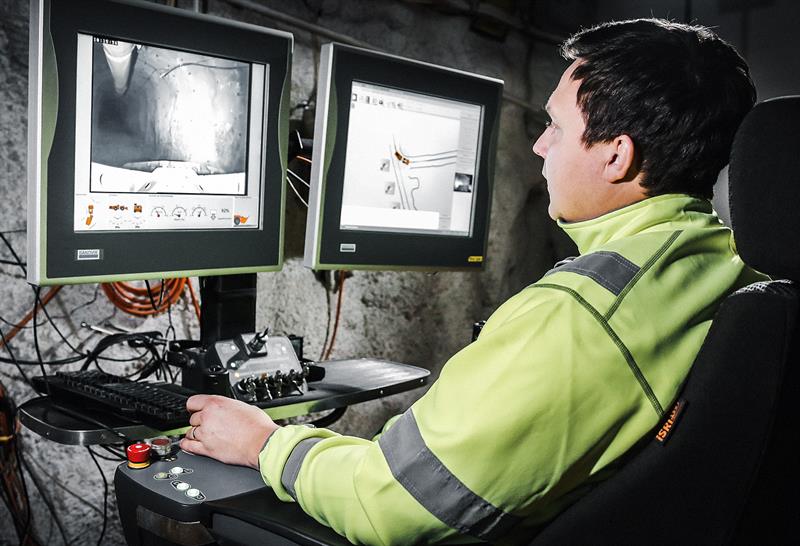“Not for at least 10 years; I don’t think the public would accept it,” argued Jörg Rüger, president of commercial vehicle and off-road at Bosch Mobility. “If we’re talking autonomous driving for trucks, we’re talking about motorways, not inter-urban traffic. For that, it’s not realistic from today’s point of view because when the truck leaves the motorway, it would need someone to take over.”
This is because the current level of technology doesn’t provide for this degree of autonomy – yet.
While Europe is in the driver’s seat when it comes to standards for increasing road safety, legislation is lagging behind the level of sophisticated solutions being developed – solutions which could lead to fully autonomous trucks.
Legislation is currently being written for stop and go control systems and turn assist systems, which Rüger believes will appear in the next couple of years.
“WABCO has developed its own urban turning assist collision avoidance system,” said Dr Thomas Dieckmann, leader of advanced development at WABCO. “OnCity is a single-sensor solution and the first to use LiDAR (light imaging, detection and ranging) technology.” LiDAR measures distances by illuminating a target with a pulsed laser light and measuring the reflected pulses.
“The system alerts the driver visually and acoustically to a potential collision, both right before and during a turning manoeuvre,” Dr Dieckmann added. “In the future, it will be able to apply the brake autonomously to prevent collisions, should the driver fail to take corrective action.”
The next level up in terms of automation – though only currently envisioned on motorways – is platoons: convoys of trucks linked and controlled electronically through short range vehicle-to-vehicle communications.
Led by the front vehicle, this communication, coupled with technologies such as forward collision avoidance systems, enables the trucks to accelerate or brake simultaneously and to follow each other more closely.
Potential benefits include: better fuel economy due to reduced air resistance; reduced congestion; fewer collisions; and less pressure for drivers, who could, instead of driving, plan routes, process shipping documents or simply take a break.
Several trial platoon runs have been conducted in Europe – including the European Truck Platooning Challenge – but legislation is still wanting.

“Platooning needs legislation to allow trucks to drive at a distance of eight to 10m, much closer together than it is currently legal,” Rüger explained, pictured left, “and to allow drivers to be on standby.
“There will eventually be mixed platoons and that needs a standardised protocol. The expectation is to see these platoons on the road between 2023 and 2025.”
Not everyone is keen on the idea however. The Road Haulage Association believes platooning is not feasible.
“Causing queues for vehicles trying to join and leave the motorway will simply create even more congestion,” cautioned Rod McKenzie. “Of course, the auto-pilot facility has the ability to remove human error and mistake – but what happens if the engine goes wrong?”
As drivers won’t be concentrating on the road, they might not be able to react as quickly when there’s a system failure, for example. Another downside is that systems could potentially be hacked.
To resolve these issues, Volvo Trucks is concentrating on improving human machine interaction to ensure good usability. “We provide training and methods for continuous improvements along with supporting tools to assist planning and driving,” said Michael Gudmunds, product manager, soft products.
While the practicality of platoons is open to debate, commercial vehicles are already benefitting from increased connectivity and automation.
“Commercial vehicles can already upload data into the cloud and download automated software updates,” said Rüger. “Infotainment is becoming more connected with smartphone integration, voice control and a Bluetooth hands-free system. Navigation systems are being used to optimise engine use and fuel consumption by providing the driver with road and environment mapping information in advance.”
Real-time information about road conditions – such as the presence of black ice – can be shared between trucks via data collected by the sensors, then processed and stored in the cloud and retransmitted.
Legislation for advanced emergency braking systems (AEBS) and lane departure warning (LDW) has been in place since 2015.
Commercial vehicle technology supplier WABCO offers an LDW system called OnLane, which detects road markings and vehicle position, and warn the driver of imminent lane departure via visual, audible and haptic signals. The camera-based solution can distinguish between a deliberate lane change and an unintentional drift by identifying the driver’s turn signal usage.

Lane keeping support takes LDW one step further by not only warning the driver but also, if no action is taken, by taking steps to ensure the vehicle stays in its lane.
Volvo Trucks’ Dynamic Steering – which combines conventional hydraulic power steering with an electric motor fitted to the steering gear (pictured right) – also provides lane keeping support.
The electrical control unit processes data from multiple sensors and controls the motor at 2000Hz to work out the truck’s direction and the driver’s intentions. A principle called ‘torque overlay’ corrects unintentional steering movements to keep the truck dead on course.
Some trucks are already ‘smart’, benefitting from advancements in automation and connectivity, and companies are more than eager to take these capabilities to a higher level.
But there is a long path to full autonomy and, as Ruger says: “A 40tonne autonomous truck frightens people.”
Autonomous commercial vehicles therefore will not appear tomorrow. “Development will be steady,” Dr Dieckmann concluded. “We will see an increase in partial automation, then further developments in the areas of manoeuvring and highway driving.”
| Remotely-controlled wheel loaders
Wheel loaders are used to load the blasted rocks onto trucks. “There is always a safety risk for drivers that unsecured rocks will fall,” said senior project manager Eilert Johansson. “So better safety is one benefit to controlling heavy machinery remotely from above ground.” According to Johansson, another benefit is improved efficiency of mining operations as time is no longer lost bringing people up and down into the mines to change shifts. To be able to control the wheel loaders remotely – as well as for other uses – a 4G wireless cellular communication network has been installed. “We spent a lot of time designing radio wave propagation models for underground,” Johansson said. “When you’re remote-controlling heavy machinery, you have high bit rate requirements, so need high bandwidth for the video streams, together with low latency.” As a prototype, a regular wheel loader was used on which the engineers built a remote-control connectivity solution equipped with six cameras, LIDARs and vibration and audio sensors. Several technology concepts had to be implemented in the software, such as a safety concept to automatically stop the machine when communications links are lost. According to Peter De Bruin, master researcher at Ericsson, 5G components have been included in the 4G network, with the idea of gradually updating to 5G. “With 5G, latency will be improved, capacity to run more vehicles and more sensors simultaneously will go up,” De Bruin explained. “We are planning to add network slicing and 5G enabled core networks. “Network slicing is a way to realise different services for different applications all running on the same network by creating virtual networks on top of the physical network.” |














